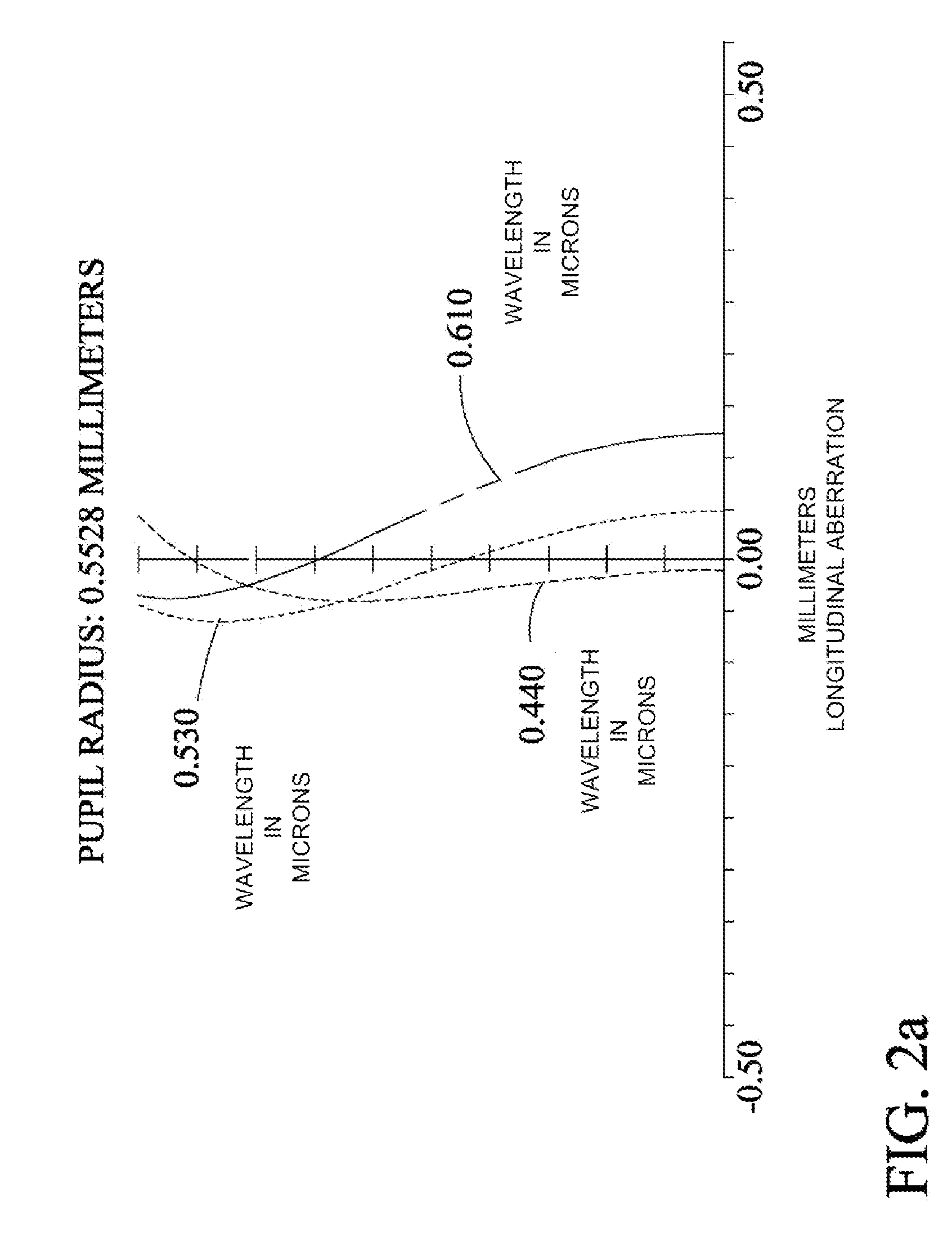Wide angle lens
a wide angle lens and lens technology, applied in the field of wide angle lens systems, can solve the problems of difficult wide angle lens design, inability to meet the requirements of long bfl and short efl for dslr cameras having aps-c or dx format sensors, and achieve the effect of convenient and less costly manufacturing
- Summary
- Abstract
- Description
- Claims
- Application Information
AI Technical Summary
Benefits of technology
Problems solved by technology
Method used
Image
Examples
example 1
[0039]Table 1 shows detailed prescription data of a design embodiment of the invention depicted in FIG. 1 and discussed above. The surfaces are counted from the object side to the image side. Therefore in the table the first element 101 of FIG. 1 would have an object side radius of 137 mm, a thickness of 2 mm, an index of refraction of 1.65 and an Abbe Number of 55.9 and an image side radius of 19.7. Remaining dimensions of the elements of this example can thereby be read from Table 1 with reference to FIG. 1.
[0040]
TABLE 1Prescription data for a first embodimentEffective Focal Length: 6.2 mmBack Focal Length: 37.9 mmSURFACE DATA SUMMARY:ThicknessSurfTypeRadius (mm)(mm)Index (Nd)Abbe#OBJSTANDARDInfinityInfinity1STANDARD137.32.001.65155.892STANDARD19.710.763STANDARD−64.11.961.65155.894STANDARD32.344.05STANDARD44.53.861.72229.256STANDARD−14.01.001.83642.297STANDARD110.125.5STOSTANDARD32.22.061.48770.099STANDARD−8.861.001.78525.7510 STANDARD−14.237.9IMASTANDARDInfinity
[0041]This example...
example 2
[0043]A second embodiment was discussed in conjunction with FIG. 3 above. This embodiment further includes a third lens element in the second group of the design. Table 2 shows an exemplary detailed prescription for this design. The description is the same as described for Example 1 above, except in this example refer to FIG. 3 for the lens elements.
[0044]
TABLE 2Prescription data for a second embodimentEffective Focal Length: 6.0 mmBack Focal Length: 38 mmSURFACE DATA SUMMARY:ThicknessSurfTypeRadius (mm)(mm)Index (Nd)Abbe#OBJSTANDARDInfinityInfinity1STANDARD92.52.001.66554.692STANDARD16.212.23STANDARD−63.02.001.66554.694STANDARD28.515.35STANDARD45.87.001.68931.186STANDARD−16.41.001.80446.587STANDARD508.943.2STOSTANDARDInfinity3.109STANDARD58.42.751.53357.9910 STANDARD−8.741.001.91035.4711 STANDARD−25.30.001512 STANDARD−213.62.501.50157.4013 STANDARD−13.738.0IMASTANDARDInfinity
[0045]The embodiment has the following properties:
|R1i / f|=2.69; within the range of 2.5 to 3.5 of eq.(1).
N4>...
PUM
 Login to View More
Login to View More Abstract
Description
Claims
Application Information
 Login to View More
Login to View More - R&D
- Intellectual Property
- Life Sciences
- Materials
- Tech Scout
- Unparalleled Data Quality
- Higher Quality Content
- 60% Fewer Hallucinations
Browse by: Latest US Patents, China's latest patents, Technical Efficacy Thesaurus, Application Domain, Technology Topic, Popular Technical Reports.
© 2025 PatSnap. All rights reserved.Legal|Privacy policy|Modern Slavery Act Transparency Statement|Sitemap|About US| Contact US: help@patsnap.com



